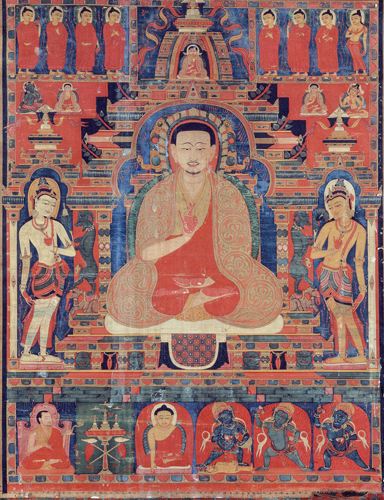by Christian Luczanits, Senior lecturer in Tibetan and Buddhist art at SOAS University, London.

Pakmodrupa Dorjé Gyelpo (phag mo gru pa rdo rje rgyal po; 1110 —1170) Central Tibet; ca. 1270
Pigments on cloth
32.1 x 25.7 cm
Rubin Museum of Art C2005.16.38 (HAR 65461)
After D. Jackson, Mirror of the Buddha, fig. 5.2.

Taklung Tangpa Chenpo Trashipel (stag lung thang pa chen po bkra shis dpal; 1142 —1210)
Central Tibet; early 13th century
Pigments on cloth
39 x 30 cm
Private Collection.
After D. Jackson, Mirror of the Buddha, fig. 5.20.
As is well known, the teacher (guru, bla ma) has an exalted role in Tibetan Buddhism. In part, this is natural in an esoteric tradition that depends on the communication of a particular teaching from a teacher to the pupil. But in the Tibetan tradition, the exaltation of the teacher is expressed in new ways that directly reference the Buddha and Buddhahood. This is particularly apparent in teacher portraits of the period when this notion first took hold, the late 12th and 13th centuries. This lecture analyses paintings of that period, and discusses them in terms of the clues they provide for the understanding of the teacher.
Besides directly referencing depictions of the Buddha and his biography, the paintings are also expressions of the notion of guruyoga, the veneration of the teacher as the deity itself. Including the information found on the backs of some portraits on Tibetan scroll paintings it becomes clear that they further have to be understood quite literally as the body of the teacher.

